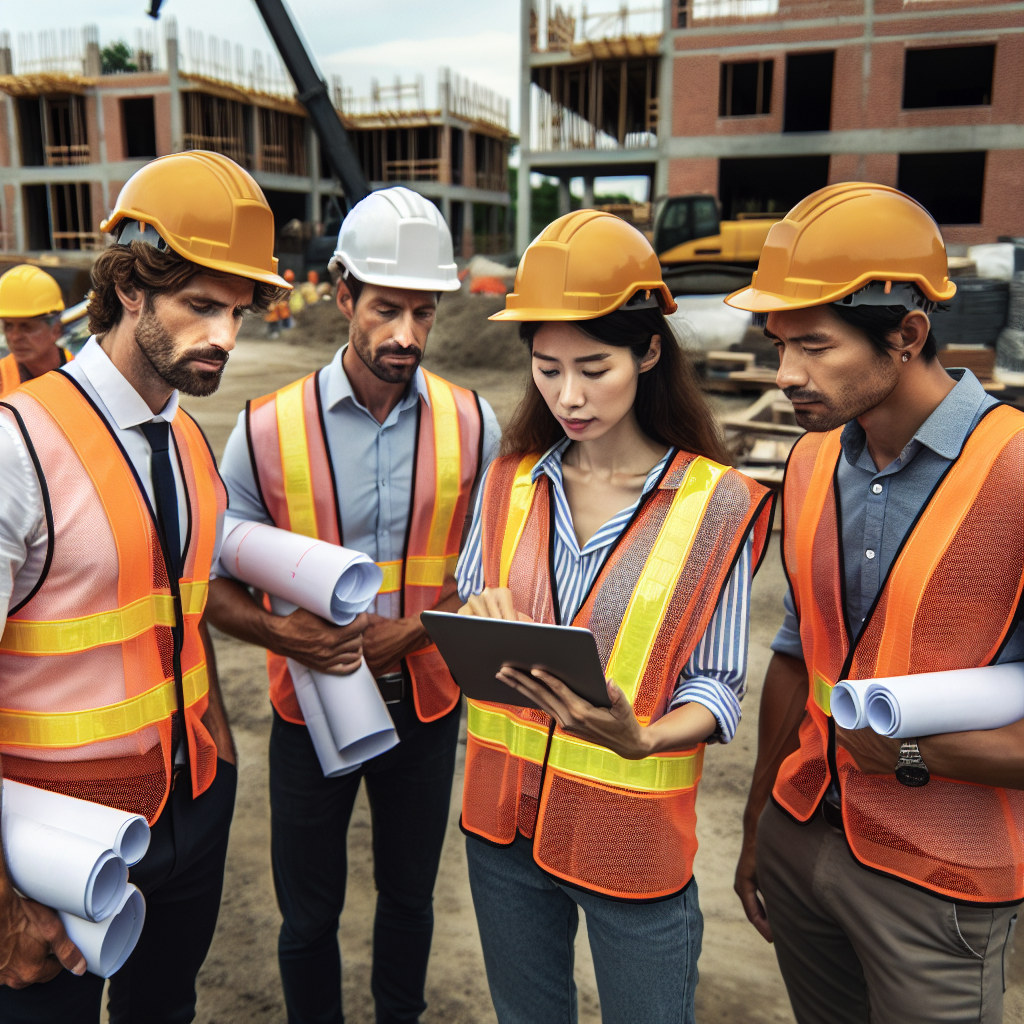Digital Twins: The Next Frontier for Construction Project Management
In an era defined by technological innovation, the construction industry is increasingly turning to digital twins as a game-changing solution in construction project management. Digital twins are virtual replicas of physical assets, like buildings and infrastructures, integrated with real-time data to mirror their physical counterparts. These digital models utilize various technologies, including sensors and IoT devices, to gather data and provide valuable insights that drive decision-making and execution. In this article, we will explore what digital twins are, their key benefits, and how solutions like Zepth can facilitate their implementation in construction projects.
What are Digital Twins in Construction?
Digital twins in the construction industry serve as advanced 3D models that not only depict the structure’s physical appearance but also integrate data regarding its operational performance, efficiency, and maintenance needs. By leveraging numerous data sources, including those harnessed from sensors, drones, and IoT devices, digital twins provide a comprehensive view that evolves throughout the lifecycle of the project, enhancing every stage of construction lifecycle management software.
Key Benefits of Digital Twins in Construction
Enhanced Accuracy and Precision
One of the most significant advantages of utilizing digital twins in construction is the enhanced accuracy they offer. By providing a precise digital representation, teams can ensure that the construction process adheres closely to the original design, minimizing deviations and errors. With construction project tracking software, project managers can easily keep tabs on the construction activities and verify that they align with the digital twin.
Improved Efficiency and Resource Management
Digital twins allow construction teams to simulate adjustments before making changes on-site. This capability helps to prevent costly mistakes while managing resources more effectively. By analyzing performance data, teams can predict maintenance needs and optimize equipment allocation. Utilizing construction financial management tools, companies can track expenses related to equipment usage and resource deployment, ultimately resulting in cost savings.
Real-time Monitoring and Management
With digital twins, project managers gain real-time visibility into all phases of construction. They can effectively monitor environmental conditions, workforce performance, and equipment usage while being empowered to adjust schedules based on real-time information. This real-time monitoring not only helps in identifying issues promptly but ensures that projects remain on schedule and within budget.
Enhanced Collaboration
Digital twins promote better collaboration among diverse teams by providing a shared, centralized data platform. This single source of truth facilitates communication and coordination among stakeholders, reducing misunderstandings and promoting project alignment. By integrating this with construction document management practices, teams can work more efficiently with always-accessible project information.
Better Risk Management and Mitigation
The predictive capabilities of digital twins allow construction teams to simulate various scenarios to identify potential risks before they can affect the project adversely. This ability enables teams to develop effective strategies for risk mitigation, thus reducing the occurrence of delays and cost overruns.
Lifecycle Management and Predictive Maintenance
By continuously tracking the health of assets, digital twins can anticipate maintenance requirements, optimizing interventions to prolong asset lifespans and minimize downtime. This aspect proves beneficial not only during the construction phase but also in ongoing operations post-completion, aligning with the needs of sustainable construction management.
Sustainability and Energy Efficiency
Moreover, digital twins can analyze energy consumption patterns, leading to optimized energy usage on-site. This analysis aids in implementing sustainable practices and informs decisions that lower the overall environmental impact of construction activities.
Steps to Ensure Accurate and Current Digital Twins
Initial Scanning
The creation of an accurate digital twin begins with initial 3D scanning of the construction site. Utilizing advanced technologies such as laser scanning lays the groundwork for building a precise digital model.
Data Collection
Next, integrating data from drones and sensors facilitates comprehensive data collection that captures real-time conditions throughout the construction process.
Integration
To maintain the accuracy of the digital twin, data from various sources must be combined effectively. Employing IoT solutions ensures that the digital twin receives timely updates.
AI Analysis
Artificial intelligence plays a crucial role in analyzing the accumulated data, revealing patterns that inform project adjustments and enable informed decision-making.
Regular Updates
Lastly, ongoing updates are vital to preserving the integrity of the digital twin. Implementing systematic protocols for continuous data entry ensures that the model reflects the latest conditions and changes.
Key Technologies Driving Implementation of Digital Twins
Building Information Modeling (BIM)
Integrating digital twins into BIM workflows enhances construction timelines while improving design visualization. This symbiosis plays a crucial role throughout construction project management software, allowing project managers to identify clashes early, facilitating smoother execution.
Drones for Site Surveys and Monitoring
Drones serve as a valuable tool for capturing accurate aerial data. Their integration into construction provides real-time monitoring, helping to ensure site safety and improving project management practices.
IoT Devices and Sensors
IOT devices and sensors are pivotal in ensuring continuous data collection and delivering real-time updates, making them essential for maintaining the accuracy of digital twins.
Use Cases and Examples
Many organizations have reaped the benefits of integrating digital twins into their project workflows. For instance:
- Turner Construction leveraged a digital twin for the Salesforce Tower project in San Francisco, streamlining logistics and ensuring a flawless safety record. This approach saved the company $15 million while optimizing progress monitoring.
- Skanska adopted a digital twin for the Stockholm New Metro project, resulting in a 20% reduction in construction time thanks to improved communication and resource management.
- Royal BAM Group implemented digital twin technology across various projects, enhancing design precision and enabling extensive real-time tracking of progress.
Challenges and Solutions
Lack of Connectivity
Maintaining connectivity between BIM models and IoT data is crucial for establishing a reliable digital twin. Solutions such as implementing a common data environment for construction can help mitigate connectivity issues.
Outdated Information
Updating design models regularly with change orders is necessary to ensure a consistent data flow. Integrating construction document management with BIM might significantly reduce the risk of outdated information.
Monitoring Progress
Using managed content, construction risk management tools, and advanced project management software can enhance data sharing, ensuring that critical project details are not lost.
How Zepth Can Help
Zepth offers cutting-edge solutions designed to support the integration of digital twin technology within your construction projects. Key areas in which Zepth can assist include:
- Integration of Digital Twins with BIM: Zepth facilitates the incorporation of digital twin technology into BIM workflows, enhancing the effectiveness of project management.
- Real-Time Data Management: Zepth’s construction project management software ensures reliable data collection from IoT devices, keeping digital twins updated and accurate.
- Project Management Software: Zepth provides tools that help track project changes and manage tasks efficiently, in alignment with the requirements for effective digital twin management.
- Resource Optimization: Leveraging data from digital twins, Zepth can help optimize the allocation of workforce and equipment, driving significant efficiencies in project execution.
By collaborating with Zepth, construction companies can harness the power of digital twin technology, paving the way for high-quality project delivery, timely completions, and adherence to budgets. For more information on how Zepth can enhance your construction projects through digital twins, visit the Zepth website.




